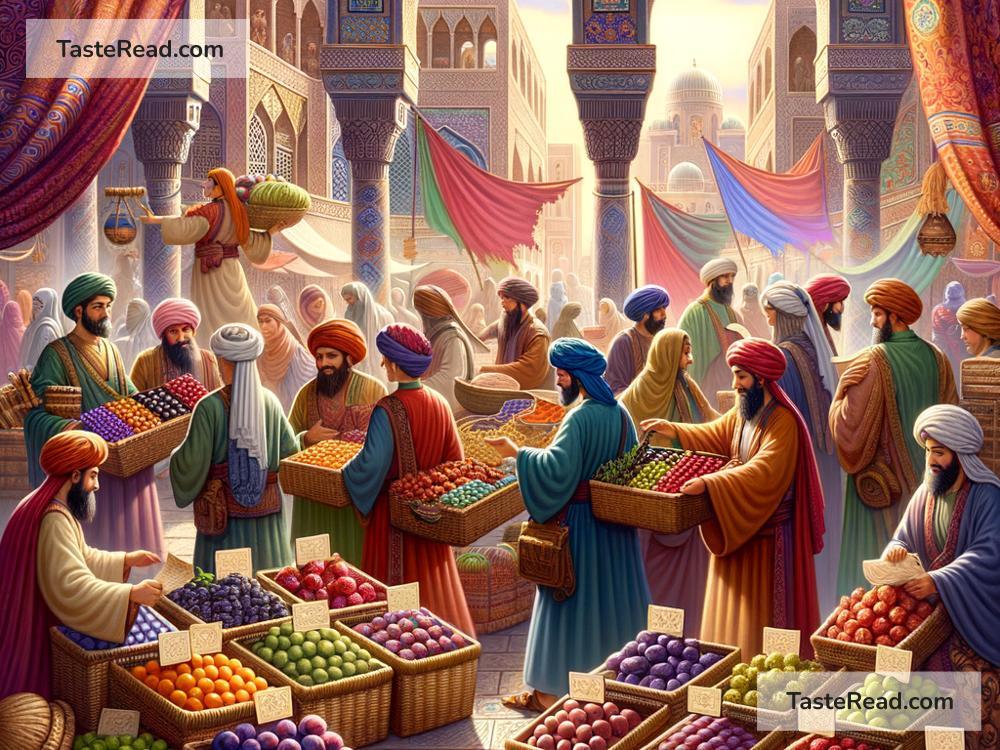The Curious Tale of Plums in Ancient Trade
When you think of ancient trade, your mind might immediately jump to exotic spices, luxurious silk, or even gold. But one humble fruit also played a fascinating role in the economic and cultural exchanges of early civilizations—the plum. This small, juicy fruit may not seem special at first glance, but its history in trade is packed with interesting stories that remind us how even small things can leave a big mark on history.
A Fruit with Deep Roots
Plums are among the first fruits cultivated by humans. Historians believe their origin dates back thousands of years in the regions surrounding the Caspian Sea, possibly in ancient Persia (modern-day Iran) or Central Asia. From there, plums slowly made their way across continents, becoming a valued crop for many ancient societies. These fruits were not only delicious but also versatile—they could be dried into prunes, preserved, or fermented into drinks. This made plums perfect for trade, especially in times when refrigeration was non-existent, and food spoilage was a constant challenge.
Plums Travel the Silk Road
One of the major platforms for plum trade was the Silk Road, a network of trade routes connecting the East and the West. Traders carried plums and plum-related products, like prunes and plum jam, along this route. Travelers found dried plums particularly useful because they were lightweight, portable, and long-lasting—a perfect snack for long journeys across deserts and mountains.
In addition to their practicality, plums became a cultural bridge between civilizations. For example, Chinese traders introduced their famous varieties of plums to the Middle East, while Persian merchants brought their fragrant plums to East Asia. These exchanges didn’t just bring new fruits to different regions—they also sparked agricultural innovations as farmers began crossbreeding plums to create new types.
The Value of Plums in Ancient Markets
Why were plums such an attractive commodity for ancient traders? One reason lies in their adaptability. Plums could be grown in various climates, from the hot Mediterranean coastlines to cooler European environments. This made them valuable as a crop that could thrive in both local farms and distant lands.
Moreover, plums had a special significance in some cultures. For example, in ancient Rome, plums were considered a luxurious fruit favored by the elite. Wealthy Romans often enjoyed plums at their extravagant feasts, sometimes preserved in honey as a rare delicacy. Farmers who supplied plums and plum products to Roman markets could make good earnings, adding to the fruit’s popularity in trade.
In China, plums were equally revered. The fruit appeared in poetry, art, and even legends. The plum blossom, though a different variety, symbolized resilience and renewal, themes deeply woven into Chinese culture. Because of its cultural and symbolic value, the plum became more than a food; it became a cherished commodity across borders.
Plum Trade Expands Westward
As Western Europe began to flourish in the medieval period, plums found themselves increasingly in demand. Arab traders from the Middle East were instrumental in introducing plum varieties to Europe. In return, European kings and nobles became eager consumers of dried plums (prunes) imported from distant lands.
Prunes, in particular, became a trading sensation. Their long shelf life made them ideal for sailors during voyages, serving as a reliable snack packed with nutrients. European nations, including France and England, eventually started cultivating their own plum varieties, but trade continued as exotic plum products remained highly sought after.
Plums Go Global with Colonization
By the time European colonization spread across the globe in the 15th and 16th centuries, plums were taken to new lands. Portuguese sailors carried plum seeds to Brazil, while British colonists introduced plums to North America. Each region adapted the fruit to its unique environment.
Interestingly, plum varieties started to reflect the identities of their new homes. For instance, Japanese-American plums were developed after different species were hybridized in California. These new strains showed how ancient trade routes had helped plums evolve into a globally loved fruit.
Lessons Hidden in Plums
So, what can we learn from the curious tale of plums in ancient trade? For starters, it’s a reminder that even ordinary things can make extraordinary contributions to history. Plums weren’t as glamorous as silk or as precious as spices, but their usefulness and adaptability helped them carve a unique path in the development of early economies and cultures.
The story of plums also highlights the importance of exchange. Ancient trade wasn’t just about selling goods—it was about sharing ideas, traditions, and methods that benefited entire civilizations. The movement of plums across countries and cultures wasn’t just about eating the fruit; it was also about agriculture, innovation, and connection.
Conclusion
The modest plum carries a long and colorful history as a traded commodity that linked people from different corners of the world. From the Silk Road to medieval Europe, and eventually to the Americas, this fruit quietly shaped human societies in many ways. As you bite into a juicy plum or snack on prunes, take a moment to appreciate the long journey this humble fruit has traveled to become a part of our lives. Like ancient traders, we too continue to share and celebrate the simple yet extraordinary treasures of the Earth.


